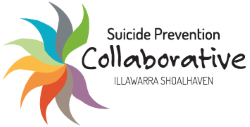Sandy Smith lost her husband Kurt to suicide and now works to support other bereaved people.
Story by Natalie Croxon, Photo by Robert Peet, Illawarra Mercury.
Last year, 3249 people in Australia died by suicide.
The Australian Bureau of Statistics released the figure earlier this week in its annual Causes of Death report.
But this is more than a number: behind each death is a person with all their special traits and complexities, and left in the wake of each loss are scores of family, friends, and fellow community members whose lives will never be the same.
Sandy Smith is one of those people. Her husband, Kurt, took his own life in 2017.
Kurt was a father to four boys and worked in retail; he was so well-respected by colleagues that at his funeral, his workmates formed a guard of honour.
He was a man who would do anything for his family, a great dad who loved music and going to concerts.
"He was funny, really funny, and that's what drew me to him," Ms Smith said of her late husband.
"Just lovely and willing to help anybody."
Six years on, Ms Smith continues to live with the pain of Kurt's death, a trauma that will never leave.
"It's one of the hardest things I'll ever have to go through, and it's going to impact me for the rest of my life, and it's going to impact my kids," she said.
- Support is available. Call Lifeline on 13 11 14 or the Suicide Call Back Service on 1300 659 467.
What the data shows about suicide
The figures from the ABS show suicide was the 15th leading cause of death for Australians in 2022.
Men were again overrepresented in the data, making up 75 per cent of recorded suicide deaths, with a 2.6 per cent increase in the rate of men dying by suicide from 2021.
For men, suicide was the 11th leading cause of death, while for women it was the 26th. Women also saw the rate of suicide decrease by 2.3 per cent.
In Australia overall, the rate of suicide increased slightly but in NSW it remained steady, and below the national rate.
However, rates of suicide in the Illawarra Shoalhaven are higher than state and national rates, with about 55 residents taking their own lives each year.
The ABS figures show that young and middle-aged people are more likely to die by suicide than older people.
Last year, suicide was the leading cause of death for those aged between 15 and 44 years old.
Over 15 per cent of women who died by suicide were aged under 25, while for men it was 10.5 per cent.
But the number of children who died by suicide dropped to its lowest in five years, and for the first time since 2013 it was not the leading cause of death among children.
However, the age-standardised suicide rate for Aboriginal and Torres Strait Islander people was its highest in 10 years, more than double of that of the national rate.
Almost 86 per cent of people who died by suicide had at least one risk factor reported, and on average experienced three to four risk factors.
"What that tells us is it really takes a whole-of-community approach," Ms Green said, because the causes of suicide were complex and individual.
A range of organisations are working together in the Illawarra to reduce the incidence of suicide in the community under Illawarra Shoalhaven Suicide Prevention Collaborative.
These include Lifeline South Coast, the South Eastern NSW Primary Health Network COORDINARE, the Illawarra Shoalhaven Local Health District, youth mental health service headspace, and 'postvention' service StandBy Support After Suicide.
Ms Smith is a member of the collaborative's executive and works for StandBy, helping other people bereaved by suicide.
She experienced the stigma of suicide and received inadequate support after Kurt's death - from a grief counsellor with a "complete lack of understanding" to loved ones who didn't grasp how she continued to struggle - but it was eventually with the collaborative that she got the help she needed.
"It was empowering to be able to have a voice, because I felt shut down by the lack of support," Ms Smith said.
Lauren Purcell is another StandBy worker with lived experience and another real life behind the statistics, having lost her brother Denny to suicide 23 years ago.
She said her family was still feeling the effects of their loss.
What the data didn't illustrate, Ms Purcell said, was the life of the person lost to suicide, nor the impact on those that were left to grieve them.
"It's just so hard for those numbers to capture the complex and unique lives of those lost to suicide," StandBy regional manager Katie Darby said.
How you can help
COORDINARE suicide prevention program manager Jo Riley explained suicide prevention took a whole of community response.
"Preventing suicide is not the sole responsibility of any one person, group, service, or sector. Every one of us has a role to play in suicide prevention," Ms Riley said.
The Illawarra Shoalhaven Suicide Prevention Collaborative and the Mercury have partnered on the Care to QPR campaign, with the aim of raising awareness of suicide prevention and encouraging people to become QPR gatekeepers.
Free, online, one-hour training is now available so people can learn to recognise the signs of suicidal distress, confidently ask if someone is feeling suicidal, and connect them with appropriate support services.
- You can find someone who will listen without judgement at Wollongong Safe Haven (open 2-10pm Wed-Sat, 55 Urunga Parade, Wollongong), Lifeline (24/7, phone 13 11 14) or 13YARN (24/7, phone 13 92 76). For those who have lost a loved one by suicide, StandBy Support After Suicide (24/7, phone 1300 727 247) and Thirrili Indigenous Postvention Support (24/7, phone 1800 805 801) offer emotional and practical support.
